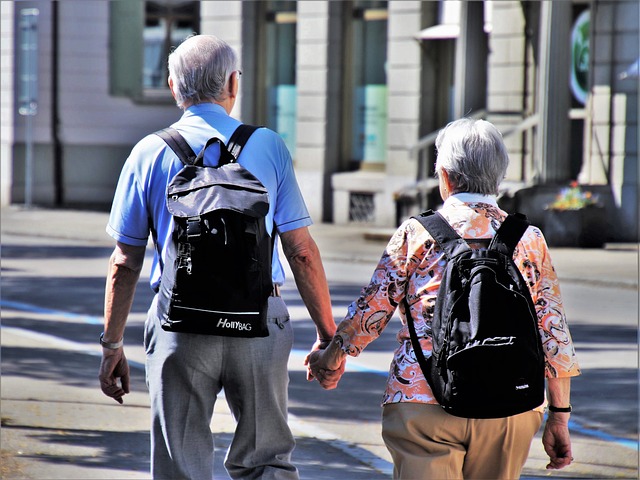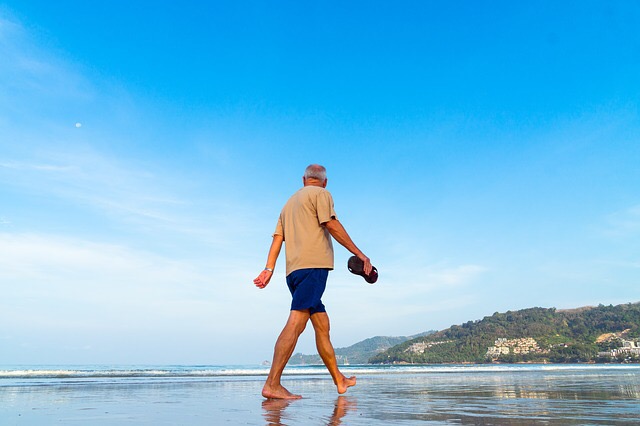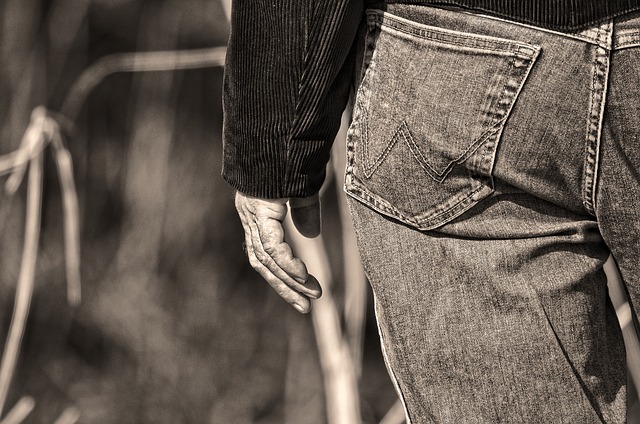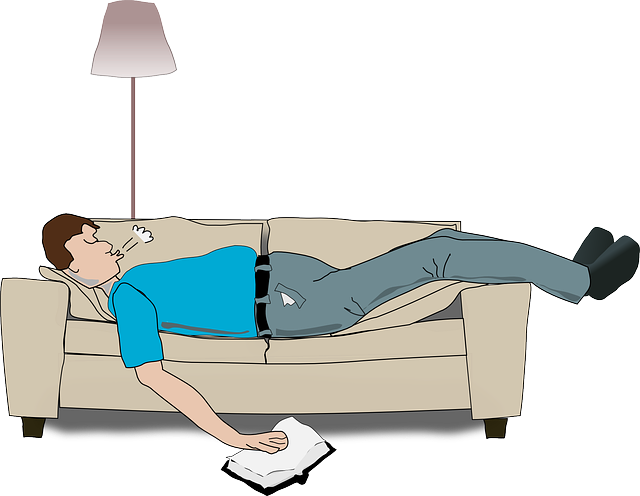Posts Tagged ‘chiropractor westwood’
The Benefits of Chiropractic for the Elderly
Chiropractic is the right choice for seniors in Westwood
Back pain statistics tend to look worse when age is added into the mix. As we grow older, lower back pain becomes a more preeminent factor in disability. Simply put, age is bad for the spine- with people living longer each generation, we are literally outliving our spines. At OFW Chiropractic, we have a mission and that is to proactively protect spines of all ages to make old age more comfortable. For seniors, that means making the right lifestyle adjustments and staying as mobile as possible despite any problematic conditions. By taking this all-natural approach to healthcare, we can prevent the typical injuries of the elderly and help you live the happiest, most comfortable life possible.
Hypermobile Joints Demand Stability Through Strength
Hypermobility as a syndrome
With our increasingly sedentary society, we have been become used to the narrative of problems associated with poor range of motion; but what about when the opposite is true? For about 10% of the population, it is: rather than suffering from poor ROM, they have too much. Caused by a condition known as congenital or ligamentous laxity, people with joint hypermobility may be able to extend a given joint far beyond what we would consider normal- this is what people mean when they say they are “double-jointed.” And while hypermobility may be a blessing for, say, a young baseball pitcher, who can take advantage of it, it can also become a curse. Joint hypermobility often coincides with musculoskeletal issues including subluxation and stress fractures. When the pain, discomfort and dysfunction associated with hypermobility becomes chronic, we call it hypermobility syndrome.
Generating Wellness in the Workplace
What workplace wellness means to us
At our office in Westwood, we see far too many bodies ravaged by the stresses of the workplace. Whether it be mental or physical, and it is usually both, stress is at the root of every workplace malady. And it is not in the employer’s best interest to help you out of this hole- indeed, it costs too much of their money and resources to provide you with the toolkit you need to succeed in feeling happy. This is ironic because happier, healthier workers are the most productive and beneficial to a given company. As employers slowly come around to this way of thinking, the impetus is still upon the individual to keep themselves healthy despite the demands of their job. At OFW Chiropractic, workplace wellness refers to a working environment where the individual feels they are able to easily access the things they need to feel well- from nutrition to exercise, ergonomics and everything in between, a happier worker starts with a better workplace.
The Importance of Seeking Treatment After an Auto Accident
There is no manual on how to act in the wake of an auto accident
In the wake of an auto accident, there are seemingly infinite questions to answer; if you are not seriously injured, it can be easy to forget that you still did suffer a trauma while dealing with police, insurance parties and the good intentions of family and friends. But here is the golden rule: your health is the most important thing. And while it may not appear or feel as though your injuries are significant, it is important to realize that you could be under the influence of shock, your body’s natural coping mechanism that can mask the severity of symptoms.
We urge everyone who has been in auto accident, if they feel even the slightest injury, to please go to a hospital and get yourself checked out! Internal injuries do not always present themselves right at first, which means that having precautionary scans could save your life! And the only way to tell whether these are necessary is by seeking medical attention. The old maxim better safe than sorry has never been more applicable than the period of time following an auto accident.
Why We Use the Activator Method
Why we use the Activator Method
Traditional, manual chiropractic adjustments are known as “high velocity low amplitude (HVLA) thrusts.” And while these adjustments provide the bulk of the treatments we provide at our office in Westwood, we also specialize in a variety of other techniques to help you get the exact treatment you need. The Activator Method is one of these techniques; it seeks to provide a similar treatment to the HVLA thrusts of manual adjustments, but using a specifically-calibrated tool. Read on to find out why the Activator Method is steadily becoming one of the preferred alternative treatment methods for people interested in improving their spinal health.
Effective Treatment for Thoracic Outlet Syndrome
Thoracic Outlet Syndrome (TOS)
TOS refers to a group of disorders that cause pain and dysfunction in the upper body. As the condition’s prevalence is on the rise, it is important that we take note of its causes so that we can more effectively treat the condition at its source.
The space between the collarbone and the first rib is called the thoracic outlet, a complex network of nerves and blood vessels that become compressed. The most common causes of TOS include:
- Traumatic injury
- Repetitive stress injuries
- Anatomical deficiencies
- Poor posture
- Pressure on the joints
Symptoms range from mild to severe, including numbness and tingling in the upper extremities, pain in the neck and shoulders, and weakness in the extremities. So how do we go about diagnosing and treating TOS?
Finding Your Center of Gravity
Why is the center of gravity (COG) so important?
Center of gravity is an important player in the game of balance and stability. Many people treat balance as a purely subconscious function of human life- the truth is, it has too much impact in your life to treat it in such a casual manner. Knowing where your center of gravity, as well as remaining aware of it at all times, is a great way to start improving your spinal health by adding in more stability and balance. It also assists in improving posture and alignment. So without further ado, let’s locate the center of gravity.
Lower Limb Biomechanics in Athletes
Lower limb biomechanics are more important than ever for athletes
As our understanding of this complex process grows, more sports scientists are starting to apply the power of lower limb biomechanics to athletic performance. Ambulation, or walking, is so fundamental to human existence that few of us give it pause for thought. Athletes should think twice, however, as this subconscious biomechanical process offers a chance for gaining a cutting edge that should not be ignored. The process involves joints, muscles and the nervous system, and has a ripple effect that reaches the spine. A further concern for athletes is that dysfunction in the lower limbs is a signal contributor to back pain, spinal misalignment and a host of other symptoms. A biomechanical assessment of the lower limbs could be your ticket to resolving long-standing issues that have hampered your athletic performance.
The Infamous Dormant Butt Syndrome
What is the science behind this unfortunate sounding condition?
Are you chronically neglecting your butt muscles? Wipe that grin off your face because it could be the cause of lower back pain, knee pain and hip tightness. Inactive butt muscles can contribute, if not solely cause, a whole range of spinal pain and dysfunction. The problem can be boiled down to:
- Weakness in the glutes
- Tight hip flexors
These two factors can pull your spine out of alignment at the base, while your dormant, weak butt muscles fail to perform their duties of absorbing shock and supporting the spine. This allows the surrounding joints in the hips, knees and lower back to become overloaded, overstressed and, quite often, this results in injury.
Finding Neutral Posture Throughout the Day
Posture flows
Posture is a fluid struggle- you are always going to be slipping in and out of healthy spinal postions depending on your activity. But many of us are ignorant of the basics of good, neutral posture. Let’s define it quickly: neutral posture is a position of low pressure in which the spine’s natural curvature and alignment are maintained. This is difficult to achieve! Unless you are proactive at all points throughout the day, you will fall into positions that are damaging for the spine and surrounding musculature. Sitting and standing, the two most common positions we adopt throughout the day, pose the largest challenge to our postural integrity.










